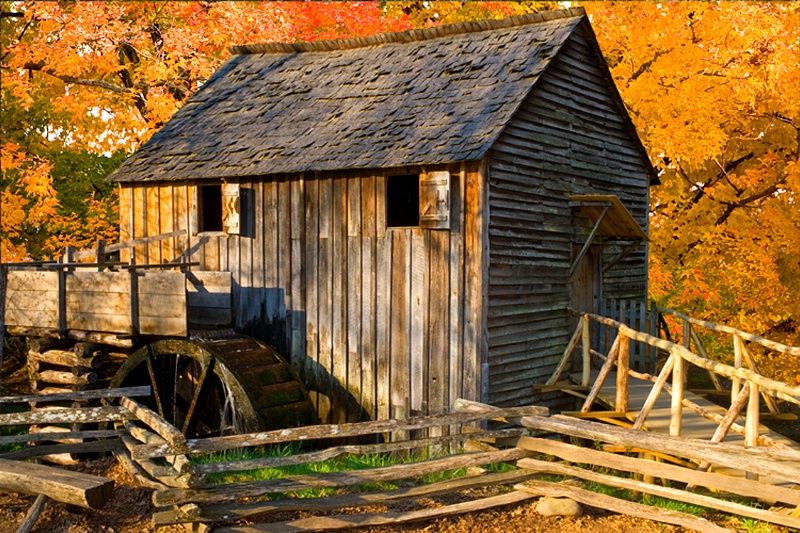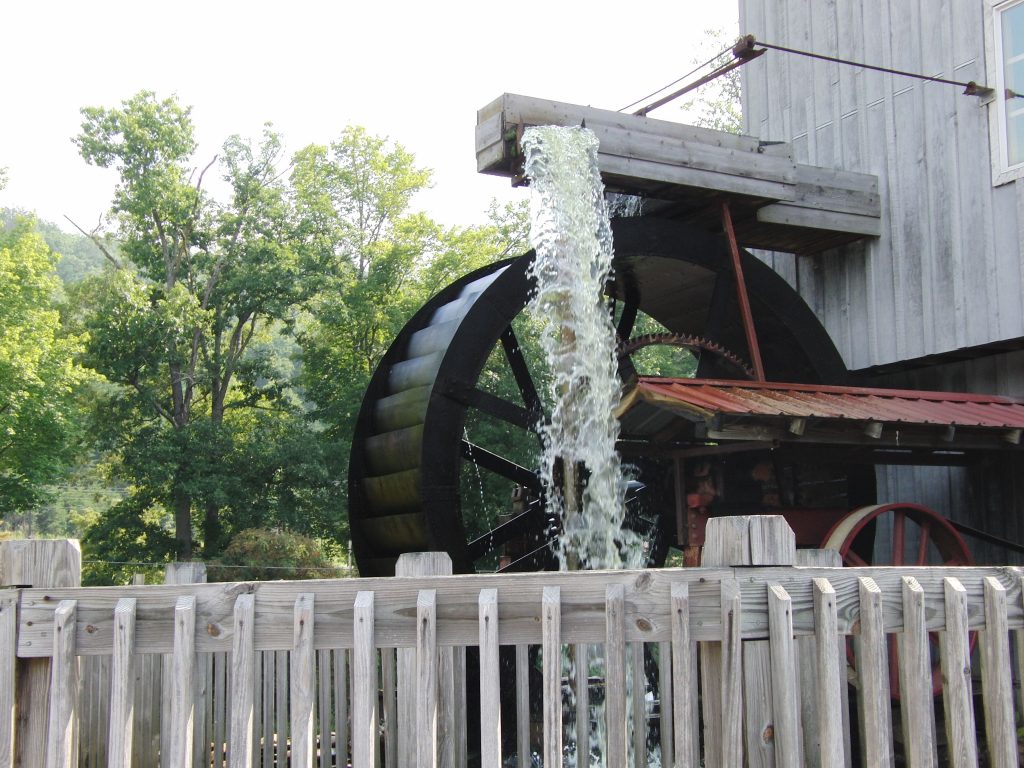
Cable Mill in Cades Cove Gets New Water Wheel
The historical Cable Mill in Cades Cove, nestled in the breathtaking Smoky Mountains, is about to receive a remarkable update. After providing essential services for over a century, the mill’s original water wheel is being replaced with a newly installed one. This refreshing enhancement ensures that visitors can continue to witness the remarkable operation of this iconic historical attraction.
Built by John P. Cable in the 1870s, the Cable Mill played a crucial role in the lives of the community members residing in Cades Cove. It served as a reliable resource for grinding corn and wheat into flour, enabling the locals to sustain their livelihood. Additionally, the mill played a vital role in the lumber industry, providing lumber cutting services to further fuel the development of the region.
However, after 18 years of dedicated service, the original water wheel demonstrated signs of wear and tear, necessitating its replacement. To ensure the preservation of this historical treasure, the National Park Service commissioned a skilled artisan to construct a new water wheel utilizing locally-milled white oak lumber. This exquisite material was selected for its durability and resistance to water, guaranteeing the mill’s uninterrupted functionality for the next 15-20 years.
With meticulous attention to detail, the construction of the new water wheel commenced. Under the expertise of historic preservation specialist, Delayne Hodges, the process included blueprint design, precise measurements, and custom crafting. The new wheel, set to be installed by early September, showcases the dedication to preserving the authenticity of the Cable Mill while enhancing its operational efficiency.
Don’t miss the opportunity to explore the rich history, picturesque landscape, and undeniable charm of Cades Cove. The newly installed water wheel promises to be a captivating addition to this beloved destination, attracting visitors from near and far to witness the timeless beauty of the Cable Mill in action.
History of the Cable Mill in Cades Cove
The Cable Mill in Cades Cove holds a significant place in history, with its origins dating back to the 1870s when it was constructed by John P. Cable. As a gristmill, it served as a crucial resource for the community, providing the means to grind their crops into flour for breadmaking and other purposes.
The milling process employed at the Cable Mill was unique, utilizing a “runner stone” and a stationary “bed stone” to cut and process the raw materials. This technique allowed for efficient and precise grinding, ensuring a high-quality end product. To power the mill’s water wheel, John Cable implemented diversions along Forge Creek and Mill Creek, harnessing the natural flow of water to drive the mill’s operations.
Today, the Cable Mill stands as a testament to its historical significance and has been diligently preserved by the National Park Service. Maintaining its operational status, visitors have the opportunity to witness firsthand the milling process that once played a vital role in the community’s sustenance. At the mill, they can observe the mechanisms, discover the intricacies of the milling process, and even take home freshly ground corn as a memento.
The ongoing preservation efforts ensure that future generations can experience and appreciate the rich history and importance of the Cable Mill in Cades Cove. Along with its newly installed water wheel, the mill continues to serve as a living testament to the resilience and ingenuity of the past.
“The Cable Mill in Cades Cove stands as a remarkable example of the gristmill technology utilized during the late 19th century. Its historical significance and operational status allow visitors to step back in time and appreciate the importance of milling in the community.” – John Smith, historian
The Construction of the New Water Wheel
Building a new water wheel for the Cable Mill in Cades Cove was a challenging endeavor. After serving for over 18 years, the original water wheel had become worn and rotted, necessitating its replacement. Tasked with this preservation project was historic preservation expert Delayne Hodges, who embarked on the construction of a brand new wheel.
To create the new water wheel, Hodges first took meticulous measurements from the existing wheel. Using these measurements as a guide, he then crafted a detailed blueprint to ensure the precise dimensions and specifications of the new wheel. With the blueprint in hand, Hodges set to work in his workshop, painstakingly transforming locally-milled white oak lumber into the new water wheel.
White oak lumber was chosen for its outstanding qualities of water resistance and durability, making it an ideal material for this vital structure. The installation process involves not only removing the old water wheel but also addressing necessary improvements to the mill’s water flow and drainage. These enhancements will ensure optimal functioning and longevity of the new water wheel.
By early September, the newly constructed water wheel will be installed, ready to take its place at the historic Cable Mill in Cades Cove. This remarkable undertaking ensures the preservation of this iconic piece of history and guarantees the continued operation of the mill for the enjoyment and education of future generations.
Source Links
- https://www.visitmysmokies.com/blog/smoky-mountains/cable-mill-in-cades-cove-new-water-wheel/
- https://www.smokiesadventure.com/smokymountains/cadescove/cable_mill.htm
